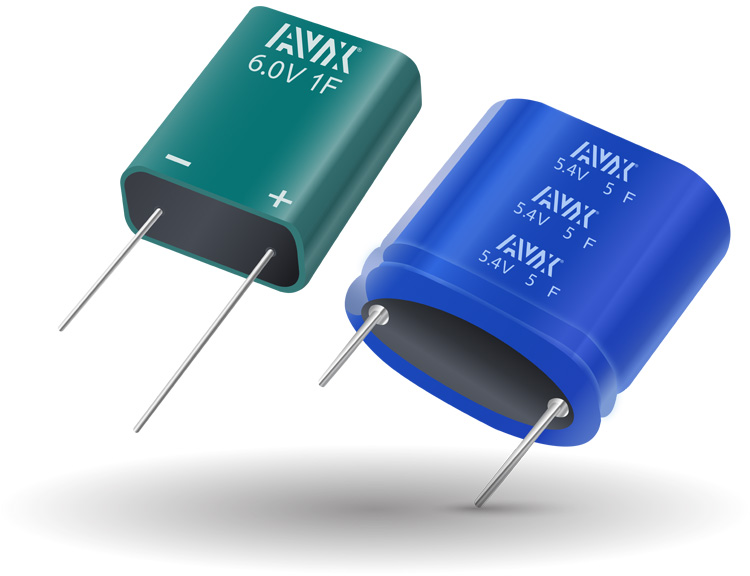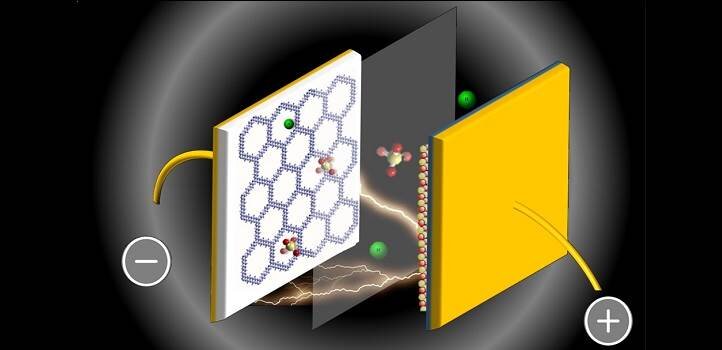Global electricity consumption continues to increase faster than world population, leading to an increase in the average amount of electricity consumed per person.
With increasing power demands, the need for efficient storage rises and quest for such devices intensifies. Batteries have played and will be playing a crucial in serving the energy storage needs. Supercapacitors and associated components have been drawing a lot of attention right from its invention due to the technology’s exceptionally high capacitance with an almost unlimited charge/discharge cycle life. Supercapacitors promise an operational voltage between 1 and 3 V for both organic and aqueous electrolytes, with the potential for improbable energy storage and rapid charging.

Supercapacitors store energy using electrodes and electrolytes and both charge and deliver energy promptly – traditional batteries deliver the same task in a much slower fashion. Super capacitors have the ability to charge and discharge rapidly over very large numbers of cycles.
However, because existing super capacitors have inadequate energy density per kilogram (currently around one twentieth of existing battery technology), they have been unable to grapple with traditional battery energy storage. Even with this limitation, supercapacitors buses are already being utilized in China.
Scientists and researchers around the world are a a quest to end the the limitations of supercapacitors and hence forsee them as future of energy storage devices.
Graphene based Supercapacitors
A team of researchers at the Technical University Munich (TUM) has developed a highly efficient super capacitor.
This energy storage device is based on a novel, powerful and sustainable hybrid material composed of graphene and its performance is comparable with the currently employed batteries.

Sustainable material delivers high performance
Graphene hybrid material for supercapacitors serves as the positive electrode in the energy storage device. The researchers are combining it with a proven negative electrode based on titan and carbon.
The latest energy storage device achieves an energy density of up to 73 Wh/kg, which is comparable to the energy density of nickel-metal hydride battery and also performs better than most other supercapacitors at a power density of 16 kW/kg.
The secret of the new supercapacitor is the combination of novel materials—hence, chemists refer to the supercapacitor as ‘asymmetrical.’
Nature Inspired Hybrid Materials
To overcome the limitations of standard materials, scientists have plan to come up with nature inspired hybrid materials. Roland Fischer from German University says: Nature is full of highly complex, evolutionarily optimized hybrid materials—bones and teeth are examples. Their mechanical properties, such as hardness and elasticity were optimized through the combination of various materials by nature.
Prolonged Stability makes them fit for various applications
However, that is not the only benefit of the new material. To obtain a chemically stable hybrid, we need strong chemical bonds between the ingredients. The bonds are apparently the same as those between amino acids in proteins.
The stable connection between the nano-structured components has tremendous improvements in terms of long term assurance: The more stable the bonds, the more charging and discharging cycles are plausible without significant execution impairment.
For comparison: A classic lithium accumulator has a valuable life of around 5,000 cycles. The novel cell developed by the TUM researchers holds close to 90 percent capacity even after 10,000 cycles.
Supercapacitors are already being used in laptops and similar electronic devices that demand instant charging and gradual discharging. Supercapacitors can also be seen near railway lines as these require large amount of energy to accelerate from rest and/or lower the speed in very less time.
Supercapacitors happen to be best source of power for modern day electronics like e-skin, e-cloths and other flexible electronics.
Humans have been in a continuous quest of energy storage devices that best suit the modern day applications. In near future all the discoveries and events associated with energy storage devices might be seen as The Age of Energy Revolution.





Great post. The tips and the ideas given in the post seems to be very much informative and useful for the job seekers. Thank you for such a good post.
Hi there! This is kind of off topic but I need some advice from an established blog. Is it tough to set up your own blog? Im not very techincal but I can figure things out pretty quick. Im thinking about setting up my own but Im not sure where to start. Do you have any tips or suggestions? Cheers
I just wanted to comment and say that I really enjoyed reading your blog post here. It was very informative and I also digg the way you write! Keep it up and I’ll be back to read more in the future
Thanks, I am glad you enjoyed it.
It appears that you’ve put a first-class amount of effort into your piece and I demand a lot more of these on the World Wide Web these days. I truly got a kick out of your post. I do not have a bunch to to say in reply, I only wanted to register to say phenomenal work.
Thank You, for the motivating comment.
Great post! Are there any pespectives that you may be able to divulge in order to justify your last part a small amount further? thanks a lot
My good friend and I were just talking about this particular subject, jane is always wanting to prove me wrong! I am going to present her this particular write-up and additionally rub it in a little!
Hello, I just desired to take the time to make a comment and say Ive really enjoyed reading your site. That was a really great article Please keep writing because I love your style a lot.
Fantastic blog post. I was checking constantly to this weblog & Im really inspired! Extremely helpful information, especially the third part. I really need this kind of information. I was seeking this kind of knowledge for quite some times. Thank you and good luck.
Thank you, I am glad you liked it.